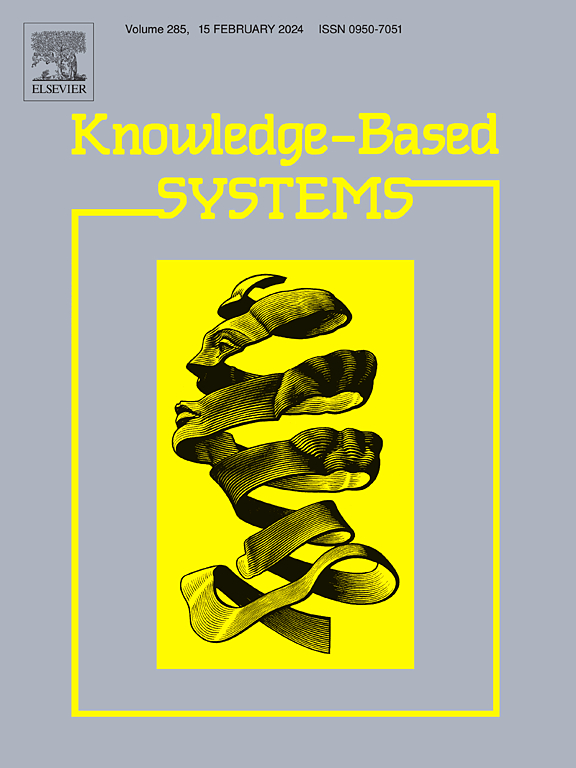LbpRIPooling:一种新的cnn旋转不变池化方法
IF 7.6
1区 计算机科学
Q1 COMPUTER SCIENCE, ARTIFICIAL INTELLIGENCE
引用次数: 0
摘要
卷积神经网络(cnn)中的池化层对于降低计算复杂性和通过下采样图像/特征映射促进更深层次的模型训练至关重要。虽然最大池化和平均池化通常用于提高效率,但它们无法保留像素位置信息,从而导致潜在的信息丢失。LbpPooling通过考虑像素邻域和保持局部相关性来解决这个问题,但是当输入图像旋转时产生不同的值,这会影响性能。本文介绍了一种基于池化区域中值的大小动态分配权重来提供旋转不变值的新方法LbpRIPooling。LbpRIPooling针对LbpPooling、max pooling、average pooling和几种先进的池化技术在不同的数据集上进行了评估,始终显示出卓越的性能,特别是在具有挑战性的数据集上,如CIFAR10和CIFAR100,以及Pins Face Recognition。此外,这些方法被集成到迁移学习模型中,如DenseNet121、VGG16、ResNet50、InceptionV3和最近基于变压器的MaxViT架构。使用LbpRIPooling的DenseNet121在CIFAR10上比LbpPooling高出0.78%,比原始模型高出2.33%。在CIFAR100上,LbpRIPooling比LbpPooling提高了9.16%,比原始模型提高了15.78%。为了证明现实世界的适用性,LbpRIPooling在Pins Face数据集上进行了测试,证实了它在实际场景中对旋转的鲁棒性。该方法在比较的池化策略中获得了最高的准确率和f1分,验证了其在现实世界人脸识别任务中的有效性。这种方法持续保存有意义信息的能力突出了它在基于cnn的任务中取得重大进展的潜力。本文章由计算机程序翻译,如有差异,请以英文原文为准。
LbpRIPooling: A novel rotation-invariant pooling method for CNNs
Pooling layers in convolutional neural networks (CNNs) are crucial for reducing computational complexity and facilitating deeper model training by downsampling image/feature maps. While max and average pooling are commonly used for their efficiency, they fail to retain pixel position information, leading to potential informationloss. LbpPooling addresses this by considering pixel neighborhoods and preserving local correlations but generates different values when the input image is rotated, affecting performance. This paper introduces LbpRIPooling, a novel method that provides rotation-invariant values by dynamically assigning weights based on the magnitude of values in the pooling area. LbpRIPooling is evaluated against LbpPooling, max pooling, average pooling, and several advanced pooling techniques across diverse datasets, consistently demonstrating superior performance, particularly on challenging datasets like CIFAR10 and CIFAR100, and Pins Face Recognition. Additionally,these methods are integrated into transfer learning models such as DenseNet121, VGG16, ResNet50, InceptionV3, and the recent transformer-based MaxViT architecture. DenseNet121, with LbpRIPooling, surpasses LbpPooling by 0.78 % on CIFAR10 and outperforms the original model by 2.33 %. On CIFAR100, LbpRIPooling shows a 9.16 % improvement over LbpPooling and a 15.78 % improvement over the original model. To demonstrate real-world applicability, LbpRIPooling was tested on the Pins Face dataset, confirming its robustness to rotation in practical scenarios. The method achieved the highest accuracy and F1-score among compared pooling strategies, validating its effectiveness in real-world face recognition tasks.This method’s ability to consistently preserve meaningful information highlights its potential for significant advancements in CNN-basedtasks.
求助全文
通过发布文献求助,成功后即可免费获取论文全文。
去求助
来源期刊

Knowledge-Based Systems
工程技术-计算机:人工智能
CiteScore
14.80
自引率
12.50%
发文量
1245
审稿时长
7.8 months
期刊介绍:
Knowledge-Based Systems, an international and interdisciplinary journal in artificial intelligence, publishes original, innovative, and creative research results in the field. It focuses on knowledge-based and other artificial intelligence techniques-based systems. The journal aims to support human prediction and decision-making through data science and computation techniques, provide a balanced coverage of theory and practical study, and encourage the development and implementation of knowledge-based intelligence models, methods, systems, and software tools. Applications in business, government, education, engineering, and healthcare are emphasized.
 求助内容:
求助内容: 应助结果提醒方式:
应助结果提醒方式:


